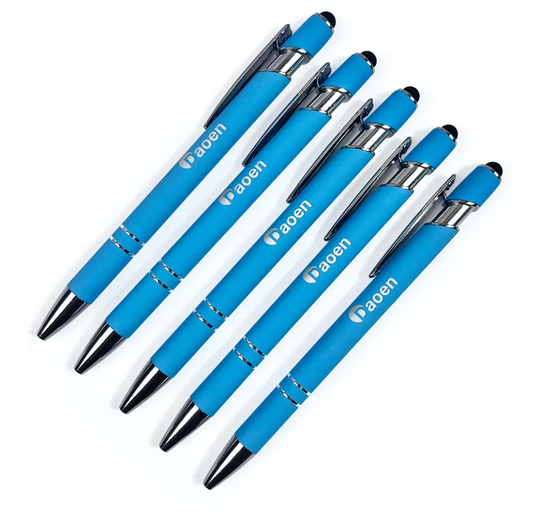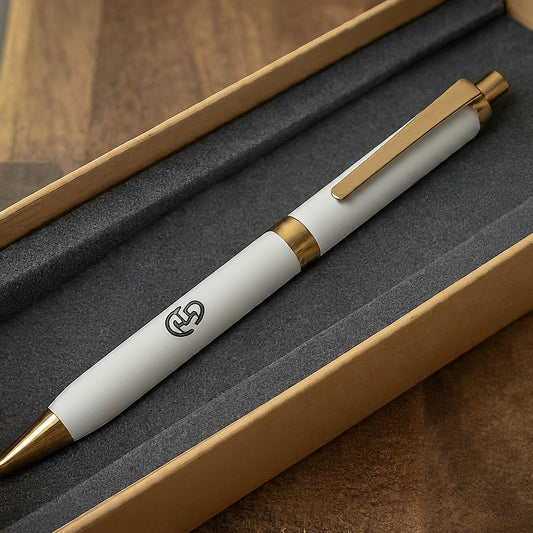Have you ever absentmindedly clicked a pen with a company logo? From doctors' offices to conferences, these seemingly mundane writing instruments are everywhere. But have you ever stopped to wonder about their history? The humble promotional pen boasts a surprisingly rich and fascinating past, evolving from humble beginnings to a multi-billion dollar industry.
Today, we delve into the curious story of promotional pens, exploring their origins, key milestones, and lasting impact on marketing. We'll answer questions like:
- Who invented the first promotional pen?
- How did plastic revolutionize the industry?
- What are some iconic examples of promotional pen giveaways?
- Are promotional pens still effective in today's digital age?
So, grab your favorite pen (branded or not!) and join us on this journey through the history of promotional pens!
From Humble Beginnings to Early Buzz:
Believe it or not, the story of promotional pens starts long before pens themselves did! In 1789, commemorative buttons featuring George Washington's portrait were used during his presidential campaign. These buttons, considered the earliest form of promotional items, paved the way for future marketing strategies.
Fast forward to 1886, and we meet Jasper Meek, a newspaper salesman with a brilliant idea. Inspired by children dropping their books on their way home from school, Meek started printing advertisements on bags distributed by a shoe store owner. These "Buy Cantwell Shoes" bags marked the unofficial birth of the promotional product industry, with pens soon entering the picture as a popular choice.
By the early 1900s, promotional pens were gaining traction. Companies like Anheuser-Busch gifted logo-emblazoned corkscrews and pocket knives to customers, effectively boosting brand recognition and sales. This marked a shift from mere advertising to strategic corporate branding.
The Rise of Plastic and Pop Culture:
The invention of plastic in the early 20th century revolutionized the promotional pen industry. Plastic offered cost-effective manufacturing, opening the door to a wider variety of pen designs and colors. This era also saw the rise of iconic branded pens, like the Parker Jotter and Bic Cristal, further solidifying their place in pop culture.
Key Developments and Modern-Day Relevance:
McDonald's Happy Meals with iconic toys like the McWrist Wallet (1979) and Hot Wheels cars (1983) showcased the effectiveness of promotional pens in attracting young audiences. The 1990s saw branded t-shirts becoming a marketing staple, with Hard Rock Café's iconic tees being a prime example.
The 21st century brought new innovations like the "Livestrong" bracelet (2004), raising awareness for social causes, and fidget spinners (2017), proving the adaptability of promotional pens in the digital age.
So, Are Promotional Pens Still Relevant?
Despite the rise of digital marketing, promotional pens remain a cost-effective and impactful way to reach audiences. Studies show consumers retain promotional pens for around six months, and the average cost per impression is only $0.005.
In a world filled with digital distractions, the tangible nature of a pen offers a unique opportunity for brand interaction and recall.
The Final Click:
From political campaigns to pop culture icons, promotional pens have woven themselves into the fabric of history. Their evolution reflects the changing marketing landscape, and their continued relevance underscores their effectiveness in connecting with consumers. So, the next time you click a branded pen, remember – it's not just a writing tool, but a tiny testament to a surprisingly remarkable story.
Remember, this is just a starting point. You can further personalize the content by:
- Adding specific examples: Mention iconic pen giveaways relevant to your target audience.
- Including local statistics: Highlight the value of promotional pens in your region.
- Incorporating humor or personal anecdotes: Make the content more engaging and relatable.
- Optimizing for keywords: Sprinkle relevant keywords throughout the text naturally.
I hope this helps you create a compelling and informative blog post that attracts readers and ranks well in search results!




